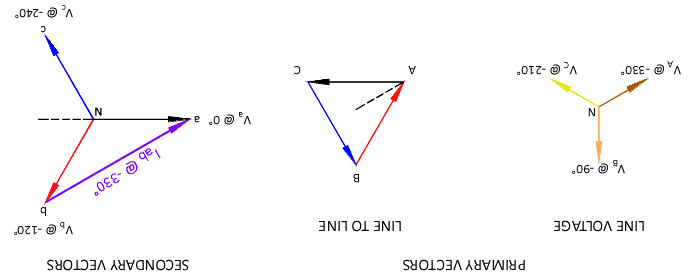mivey
Senior Member
Looks good to me. Now I can post numbers that conform to the ANSI/IEEE 30 degree standard:Smart $ said:Image replaced. Since it is linked, the updated image shows in the original post.
Does it conform now?
[edit to add:
For Delta-Wye L-N load on A & B winding
Secondary Conductor: A= 1x, B=1x, C=0, N=1x
Secondary Winding: A= 1x, B=1x, C=0
Primary Conductor: C= 1x, A=1.732x, B=1x
Primary Winding: C= 1x, A=1x, B=0
For Wye-Wye L-N load on A & B winding
Secondary Conductor: A= 1x, B=1x, C=0, N=1x
Secondary Winding: A= 1x, B=1x, C=0
Primary Conductor: A= 1x, B=1x, C=0, N=1x
Primary Winding: A= 1x, B=1x, C=0
For Delta-Wye L-L load on A & B winding
Secondary Conductor: A= 1x, B=1x, C=0, N=0
Secondary Winding: A= 1x, B=1x, C=0
Primary Conductor: C= 1x, A=2x, B=1x
Primary Winding: C= 1x, A=1x, B=0
For Wye-Wye L-L load on A & B winding
Secondary Conductor: A= 1x, B=1x, C=0, N=0
Secondary Winding: A= 1x, B=1x, C=0
Primary Conductor: A= 1x, B=1x, C=0, N=0
Primary Winding: A= 1x, B=1x, C=0, N=0
]
Last edited:



